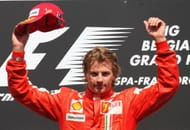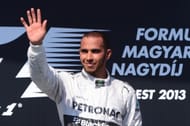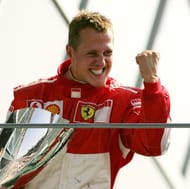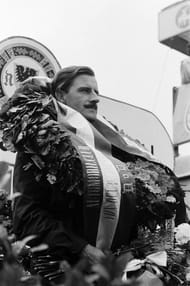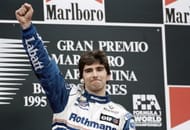F1- A costly affair
Formula 1 drivers are known to drive fast cars, date hot girls and earn millions of dollars every year. Money!
Money this year has been a huge issue of debate in F1 this year. While almost the entire first half of this season went into the sport making a mockery of itself with the teams divided on the matter of introduction of the budget cap from the next season. When 2014 regulations were announced, a budget cap was proposed to be implemented from 2015. This led the division of the teams into two groups. While the bigger teams formed a group and protested the cap, the smaller teams appreciated the move. However,the bigger teams used their powers and the budget cap was quashed. The debate soon spilled into the public domain and what happened next is known to everyone.
With the budget cap debacle subsiding, again the question of money in sports brewed as drivers who brought sponsor money were almost certified their seats for the next season while the future of talented ones were left stranded.
Motorsports and not only F1 has always been a costly affair, after all cars and bikes cost more than a cricket bat and ball. And more so in F1 which represents the pinnacle of motor racing, each and every part of an F1 car is carefully designed and developed and requires a great deal of money. The fact that 22 cars race in a single track with the intention of each to overtake others at breathtaking speeds doesn’t reduce the expenses either.
The road to F1 glory requires an aspirant to undertake a long and expensive path that starts from karting to various junior formula series and finally F1. Heck that’s not cheap. While sponsors are always on the lookout for talent and duly support them, not everyone is lucky enough to enter into motorsports with a sponsor’s backing or has a wealthy dad to bear the expenses.
With this article i aim to highlight those F1 drivers who along with their families toiled hard in this expensive sport and achieved success.
Kimi Raikkonen
The 2007 champion’s story is perhaps the best inspirational story of hard work, struggle and family bond, one can ever come across. Kimi “the iceman” Raikkonen had always been in the news for his blunt and monosyllabic answers and now for his out of form season behind the uncompetitive Ferrari.
Kimi Matias Raikkonen spent his childhood in a house built by his great grandfather in Espoo, a suburb of the Finnish capital, Helsinki. To provide for Kimi, born on 17 October, 1979, and his older brother Rami, their hard-working parents Matti and Paula Raikkonen toiled, respectively, as a road builder and an office clerk.
Money was scarce, but the Raikkonens were a happy family and their humble homestead surrounded by open countryside was an ideal environment for the two youngsters to flex their racing muscles. At first (when Kimi was just three years old) the brothers tore around on miniature motocross bikes fitted with training wheels.
A move to karts at the age of 10 paved the way for Kimi and Rami who eventually became a successful rally driver, to make rapid progress in motorsport, though it came at a cost.
His father Matti Raikkonen had to work nights as a taxi driver and nightclub bouncer to pay for Kimi’s racing.
Such were the conditions that plans to replace the outside lavatory with a proper bathroom in the family home had to be postponed and the money was diverted to Kimi’s Karts.
Family sacrificed a lot
His father and mother recollected and shared their memories for an interview of the struggling times during Kimi’s Karting career. Matti told “We travelled with these two (Kimi and Rami) sometimes even 17 races in one summer and when the distances are what they are it doesn’t mean from Friday evening to Sunday, it often means from Wednesday to Sunday”, He further added “When the boys started to drive national races – Kimi was eight – we had to get a van and a trailer so that we could get to the races”, Paula continued “It took all the time, money and strength”, she calmly says.
“We never had the feeling that we should quit. Sometimes we just realized that we don’t have enough money. We cried in the telephone to one way and another so that we could continue The family has all the time been very closely together, we have shared both the joy and the sorrow. Because of course there has been sorrow and disappointments too. Winning is a rare treat” his father says.
A man of few words the 2007 champion on the podium swigged and sprayed his champagne and, grinning at last, the Iceman broke his silence with a virtual torrent of words. "I'm very happy. I came from pretty much nothing but my family, friends and sponsors helped me get here. People will probably look at me differently and make up more stories about me. But I'm going to lead my life as I want and that's it."
Lewis Hamilton
Hamilton’s early life is not exactly a less known fact particularly because his personal life has always been an area of interest amongst the media and also because of the fact that the Briton has always been vocal about his tough upbringing.
Born on 7th Jan 1985, Lewis at a tender age of two saw his parents separating and spent the next 10 years with his mother and half sisters. At the age of twelve, he started living with his father and step mother. Family struggle and compromises came very early for him.
At the age of six, he received his go-kart as a present and this laid down the road to becoming one among of the sport’s best. However,the road was bumpy and an expensive one. But Anthony (Lewis’s father) saw his son’s happiness and talent in racing and promised to support his career.
Multiple jobs to support Lewis
Anthony Hamilton, his mentor and manager, worked day and night for years and at one time he held three different jobs to further his son's racing career, which effectively began when eight-year- old Lewis was given a well-used go-kart that cost nearly as much as the family's modest monthly income. Supporting his son became problematic, which caused Anthony to take redundancy from his position as an IT Manager and became a contractor. Soon the Hamiltons - Anthony, Linda, Nic and Lewis - were a fixture at karting events and the boy racer, wearing the familiar yellow helmet chosen by an anxious Anthony to better keep track of his speedy progress in crowded kart fields, began winning races and championships.
Michael Schumacher
The seven-time Formula One (F1) World Champion is widely regarded as one of the greatest F1 drivers of all time. According to the official Formula One website, he is "statistically the greatest driver the sport has ever seen". Yet the story of humble origins of the sports greatest is not widely known.
Schumacher was born in Hürth, North Rhine-Westphalia, to Rolf Schumacher, a bricklayer, and his wife Elisabeth. When Schumacher was four, his father modified his pedal kart by adding a small motorcycle engine. When Schumacher crashed it into a lamp post in Kerpen, his parents took him to the karting track at Kerpen-Horrem, where he became the youngest member of the karting club. His father soon built him a kart from discarded parts and at the age of six Schumacher won his first club championship.
To support his son's racing, Rolf Schumacher took on a second job renting and repairing karts, while his wife worked at the track's canteen. Nevertheless, when Michael needed a new engine costing 800 DM, his parents were unable to afford it; he was able to continue racing with support from local businessmen.
Recently he was in the news for his terrible accident.
In December 2013, Schumacher suffered a serious head injury while skiing. He was airlifted to a hospital and placed in a medically induced coma, having suffered a traumatic brain injury. He was in a coma from 29 December 2013 until 16 June 2014. He has left the hospital in Grenoble for further rehabilitation at the University Hospital (CHUV) in Lausanne, Switzerland.
Graham Hill
Graham Hill's iron-willed determination, fierce pride and great courage enabled him to overcome the odds against more naturally gifted drivers. None of them was more popular with the public than the extrovert with quick wit, who loved the limelight, was a natural entertainer and became one of the first Formula One media stars. The two time world champion died in 1975 in a plane crash.
Norman Graham Hill was born in north London on February 15, 1929. He claimed he inherited his determination from his mother and his sense of humour from his father, a stock broker. Both qualities were required to endure the deprivations and dangers of life in wartime London, where Hill grew up during the Blitz. He played drums in a Boy Scout band, went to a technical school and at 16 became an apprentice for the Smith instrument company. He bought a motorcycle and on a foggy night crashed it into the back of a stopped car, suffering a broken thigh that permanently shortened his left leg.
Self trained driver
In 1952, he joined the London Rowing Club, took to the sport like a duck to water and would later wear the club's insignia (eight vertical stripes representing oars) on his racing helmet. Before that, however, he had to wear a Royal Navy uniform, in which he felt like a fish out of water. He resented the compulsory nautical service and as a sign of protest deliberately contravened naval regulations by cultivating the neatly trimmed moustache that would become his trademark.
In 1953, on a whim, he tried a few laps around Brands Hatch in an F3 car and was "immediately bitten by the racing bug." His desire to scratch the itch was hampered by two problems: he hardly knew how to drive even a road car and could scarcely afford to fund a racing habit. He bought a rattletrap 1934 Morris, taught himself how to drive and got a license to drive on public roads. He quit his job at Smith's, collected unemployment insurance and talked his way into a job as a mechanic at a racing school, where he soon became an instructor.
He competed in a couple of races and met Colin Chapman, then in the early stages of developing his Lotus cars. After persuading Chapman to give him a part-time job (at one pound per day) Hill soon became a full time Lotus employee, and was rewarded with the occasional race. Hill married Bette in 1955. Because Hill had spent all his money on his racing career, Bette paid for the wedding. They had two daughters, Brigitte and Samantha, and a son, Damon, who himself later became Formula One World Champion—the only son of a former world champion to emulate his father.
On November 29, 1975, returning from a test session at the Paul Ricard circuit in France, Hill was trying to land in dense fog at the Elstree airfield near London when his twin-engine plane crashed and burned, killing all aboard.
Damon Hill
Damon Graham Devereux Hill was born on September 17, 1960, two years before his father Graham won his first driving title. The Hills lived comfortably in a large London house where from an early age Damon was accustomed to visits from such family friends as Stirling Moss, Jim Clark, John Surtees and Jackie Stewart. But he found their line of work boring to watch and was instead much more interested in motorbikes, a small example of which his father bought for him when he was 11.
Four years later the Hill's happy home life was torn asunder when Graham and several members of his Formula One team were killed in an air crash. Insurance claims wiped out all the family savings, leaving Bette Hill to bring up Damon and his two sisters in drastically reduced financial circumstances. Damon credited both his parents for instilling in him the qualities he needed to endure and overcome the hardships that came his way.
To help finance his education (he studied English, history, economics and business administration) Damon worked as a laborer and as a motorcycle courier. In 1981, he started competing on bikes, preparing them himself and towing them to the races where he slept in a tent. In 1985, at the age of 25, he found enough sponsorship for a season of Formula Ford racing, where he showed promise, but was not rated highly. The same was true of Formula Three, where he won three races in three years, following which another three years in Formula 3000 failed to produce a victory, though his obvious attributes as a hard-working, hard-trying impressed Williams enough to hire him as a test driver, beginning in 1991.
Lead driver for Williams
In 1993, at the age of 33 and with only two Grand Prix starts on his CV, Damon made the most of the opportunity, winning three races and finishing third overall to his title-winning team mate Alain Prost, who then retired from Formula One racing. The next year, after Prost's replacement Ayrton Senna was killed in his third race with Williams, the task of leading the team fell to Damon, who responded brilliantly, helping rebuild morale and driving himself to exceed all expectations, save his own. His 1994 championship battle with Benetton's Michael Schumacher ended when they collided controversially in the final race at Adelaide.
In 1995, after he finished second best to Schumacher, criticisms of Hill escalated. Some in the Williams team thought he should have done better in what was the best car and Schumacher suggested he was a second-rate driver.
In a very emotional Interview Damon presented his side of the story. In his own words: "Some people might think I got here because I had a sweet smile and a famous name," Hill added. "Well it wasn't like that. I was written off a lot during my career. The point I am making is that the fact I am at Williams is a measure of my determination to succeed. As for the team, it will naturally be more inclined to put its faith in someone who has actually done the job, rather than someone who claims he can do it."
Williams left him
And yet when he duly took the driving title in 1996, by winning eight of the 16 races and out-pointing his rookie team mate Jacques Villeneuve, the team lost faith in Damon Hill. Late in the season Williams told him his services were no longer required (and replaced him Heinz-Harald Frentzen). Though shocked by his unceremonious dismissal Damon maintained the decorum he thought a champion should have, leaving his indignant wife Georgie, whom he married in 1988 and had three children with, to speak up for him. "Damon has proved himself to have more integrity and dignity in his little finger," Georgie Hill said, "than most people have got in their whole body."
With no top drives available he endured an unproductive 1997 at Arrows, then moved to Jordan, scoring that team's first Formula One victory in the 1998 Belgian Grand Prix. In his final season, with Jordan, his motivation waned noticeably and at the end of 1999 he finally hung up the well-known Hill helmet. There was no doubt he had done justice to the family name. To Graham Hill's total of 14 wins and two driving titles, Damon Hill added 22 victories and a World Championship.
Sebastian Vettel
The fact that the defending world champion had very humble origins comes as a shock to many people.
Vettel’s true F1 career began with Red Bull in 2009 when he made the move from Toro Rosso. But even prior to Red Bull his career has not been any shorter than a revelation. While driving for small and mid field teams he showed his natural speed and talent while lacking only experience. The German’s career saw him claiming many youngest formula 1 titles. During his 5 year stint with Red Bull, the German became 4 times world champion from 2010 to 2013. While with Red Bull his career graph soared, his image took a beating. His overtly competitive nature, defying team orders and his clash with Mark Webber made him the eyesore of F1 fans. His domination of the sports led many to conclude that he is the reason of fans dwindling interest in F1.
With the media and fans busy focusing on his criticisms and the fierce guarding of his private affairs, the story of the champion’s rise to glory is not widely known. But aside all the criticisms, no one can question his talent.
Parents guided him in the right way
Sebastian Vettel was born on 3rd July, 1987, at the German city of Heppenheim. The love for racing came since his birth as it was already within the family because his father Norbert was into hill-climb racing and karting events, so all the family used to travel along in a trailer. His four years older sister, Stephanie, also drove karts in 1993 and 1994. To increase on such love, at the age of three and a half, Sebastian received a kart as a Christmas present and as expected, he started driving it and his parents had to force him out of it, to do basic stuff like eat, as Seb later confessed in several interviews.
The Vettel family base is in the small city of Heppenheim, one hour away from Frankfurt and three hours away from Seb’s new home in Switzerland. Their house is pretty easy to find – just look out for the old Volkswagen on top of a garage, in front of which is a small parking lot where Seb started karting at the age of three.
With limited space, his father had to water the track because the only chance to make one corner was to slide around it. Seb said in an interview: “It all just started because I had a lot of fun.”
Seb’s father Norbert started his own small carpentry business 23 years ago, his mother Heike, is a housewife and his oldest sister Stephanie, is a physiotherapist to disabled children. His other sister Melanie has no interest in motorsport and prefers horses to horsepower. Fabian likes karting, but the family has dissuaded him from choosing his older brother’s career.
From karting to Formula 1
Seb’s experience in karting made him stronger – when he started the family had no money, so he had to squeeze everything out of old equipment to be competitive. Norbert sold his own hill-racing car and took his son to car shows to talk to sponsors. They took any help they could get – the 12 year-old Sebastian had a vodka logo on his overalls. He printed out a Lance Armstrong quote and put it on his wall next to his bed: “For every single victory I paid with gallons of sweat.”
The turning point in his career was when, at the age of 13, Red Bull scouts spotted him at the same karting track in Kerpen where Michael Schumacher started his career. From then on there were opportunities. He was 15 when Red Bull gave him the chance to test his first open-seat race car in Austria (illegally, 16 is the minimum age).
Norbert is at most of the races too. He loves to drive the family camper van because it reminds him of the old days when the whole family toured Germany to Sebastian’s karting races. During testing in 2011 father, son, little brother and a friend of the family slept in that small van. Jenson Button’s camper van parked next door was almost double the size.
Seb does not show off his riches for a simple reason – he fears that somebody could kidnap his younger brother, Fabian. His success has changed the lives of his family. His father cannot work as a cabinet maker any more because people think they don’t have to pay a multimillionaire’s father.
Conclusion
Hard work and determination had always been the true recipe for success. One true look into the lives of these achievers will definitely reveal this fact. These guys not only successfully made it to the world’s costliest sport but also achieved the highest achievement there is, they became world champions. For a sport which has been lately too concerned with drivers backed by sponsors and money, the stories of these drivers from rags to riches definitely proves to be the silver lining of today’s F1 era.
